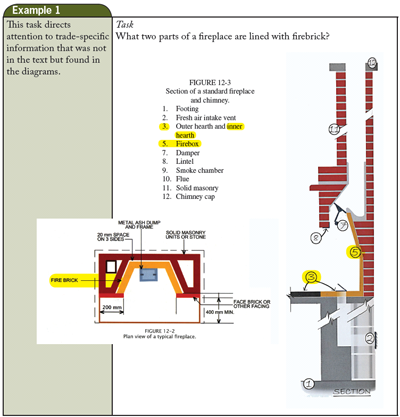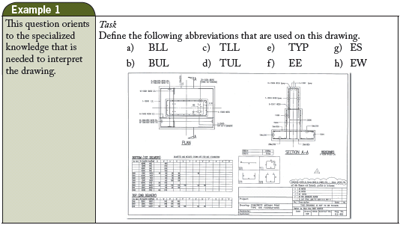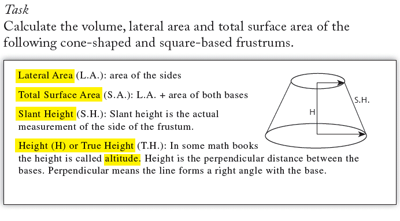Apprentices need to learn and memorize a lot of vocabulary, terminology and jargon that is specific to the trade. Often this vocabulary cannot be located in a regular dictionary. That is why it is important for technical trainers to consistently use and reinforce terminology that apprentices need to know. When technical trainers incorporate vocabulary building strategies into their handouts and worksheets, it helps to strengthen vocabulary.
Below are some suggested strategies to enhance vocabulary learning:
Use the same terminology, phrasing and abbreviations when discussing a concept and be consistent in your worksheets and handouts. Using trades-specific vocabulary helps apprentices to remember and use the same jargon.
Locating specific words or terms reinforces that these words or terms are important. The questions also direct attention to other information that includes trades-specific vocabulary, such as in diagrams, tables and drawings. The task below draws attention to trade-specific information that was not in the text, but found in the diagrams.

Teach apprentices the meaning of abbreviations and show where they are in the documents and text. In this task, learners need to become familiar with the abbreviations that are used in the drawing.

That way, apprentices learn to use context clues and make inferences to understand meaning.
For example:
How many tonnes of HMA (asphalt) are required to cover an area that measures 1500 m long by 7.5 m wide at a depth of 50 mm?
Calculate the tonnes per hour (TPH) to be placed.
Notes are also useful to remind apprentices of relevant trade information they will need.
In the task below, the terms used in the trade are explained then used in the question. A note explains that the term “Height” or “True Height” might be referred to as “altitude” in some math books.

Use “Calculate” instead of “Find” to be clear that the answer needed is a calculation. “Find” implies simply locating a number, while “calculate” indicates that math operations are needed to answer the question.
These strategies for learning vocabulary will improve the reading comprehension of apprentices and help with their ability to complete technical training tasks.